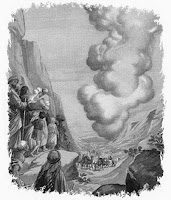As I have said before, transformation is only possible when we are willing to shine a light in the shadowy places of our world, our communities and our own psyches. It is in these places that we will find unexamined and sometimes unnamed fears, desires, prejudices, disappointments, and losses, both great and small.
These darker places can be rich and fertile ground for transformation. In fact, we might think of them as points of opportunity for us to both co-create and transform the world we inhabit.
But, in order to be of any use to us or others, these places of darkness must first be seen. Otherwise, our individual and collective shadow sides will be passed along from person to person, generation to generation, forever.
Certainly, we see such patterns within families. A hidden or unspoken shame or secret has a ripple effect that reaches out from person to person and parent to child in waves that seem never to end--unless they are recognized and somehow transformed.
This phenomenon occurs not just in families but also in congregations, communities, countries and civilizations: what we do not transform, we transmit.
The work of religious transformation, then, begins with identifying those things that dwell in darkness, seeing them clearly, and working to transform them. Otherwise, religious communities simply transmit the same fears, prejudices and disappointments that they inherited from previous generations and from the larger culture from which they sprang.
For this reason, if no other, it is vitally important that transformation be at the center of our actions and aspirations. Transformation of self, community and world cannot happen in isolation and it cannot happen by accident.

If religion is that which binds us together, then we have a choice: we can either be bound together by those things that remain in darkness, or we can be bound together in our efforts to transform those shadowy things as we work toward reconciliation, healing and wholeness.
There’s a very old story that, when God created the world, he left one corner unfinished and in darkness. It is in this corner that evil spirits, ill winds, and all manner of catastrophes dwell. Our task is to deal with this unfinished corner of creation, to transform it and to bring it to completion.



















